- Joined
- Oct 9, 2007
- Messages
- 47,598 (7.45/day)
- Location
- Dublin, Ireland
| System Name | RBMK-1000 |
|---|---|
| Processor | AMD Ryzen 7 5700G |
| Motherboard | Gigabyte B550 AORUS Elite V2 |
| Cooling | DeepCool Gammax L240 V2 |
| Memory | 2x 16GB DDR4-3200 |
| Video Card(s) | Galax RTX 4070 Ti EX |
| Storage | Samsung 990 1TB |
| Display(s) | BenQ 1440p 60 Hz 27-inch |
| Case | Corsair Carbide 100R |
| Audio Device(s) | ASUS SupremeFX S1220A |
| Power Supply | Cooler Master MWE Gold 650W |
| Mouse | ASUS ROG Strix Impact |
| Keyboard | Gamdias Hermes E2 |
| Software | Windows 11 Pro |
In the beginning, there were NVIDIA Detonator and ATI Catalyst. Detonator made way for GeForce Software, but Catalyst pulled through for another decade. These are the brand names GPU makers use to label their drivers, because GPUs are devices that warrant frequent driver updates to keep up with new software and performance improvements. AMD, after consolidating most of its visual computing divisions into the Radeon Technologies Group under technocrat Raja Koduri, made its first major announcement, re-branding AMD Catalyst as Radeon Software. Its first release gets a special name - Radeon Software Crimson Edition 15.11.
AMD's new nomenclature for its drivers involves firmly placing the Radeon brand name, replacing "Catalyst," followed by "software," indicating that these are not just drivers, but a suite of applications designed to give you control over your visual computing experience; with "Crimson Edition" being the major version for the year 2015-16, and 15.11 denoting November 2015, retaining the date-based version numbering scheme. These could come with extensions such as "WHQL" or "Beta." The first Crimson Edition drivers will be WHQL-signed.
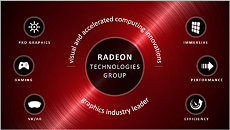
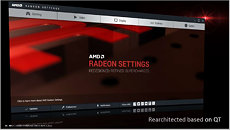
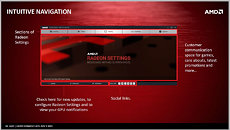
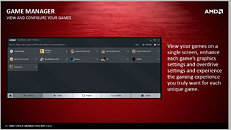
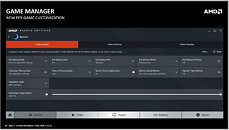
At the center of Radeon Software Crimson Edition 15.11 is the doing away of Catalyst Control Center (CCC) and Raptr, and in their place, a slick new application built from the ground up, called Radeon Settings. This app no longer relies on .NET, unlike CCC. Its user interface is minimalist, and keeps up with the Windows 10 theme, but its variations could blend with OS X and Linux GUIs.

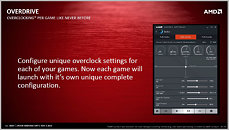
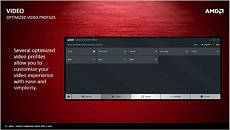
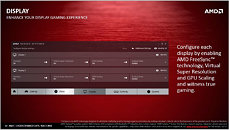
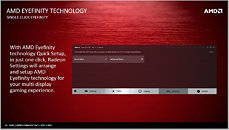
The application is designed for fast startup, and features a ribbon-tab UI design, with a top bar selecting main settings pages, and the bottom one with minor settings and social buttons. With Raptr gone, game-specific optical settings are care of the "Games" tab, in which you can make graphics and hardware overclocking settings specific to a game, besides global settings.
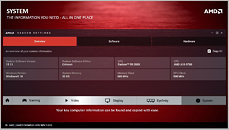
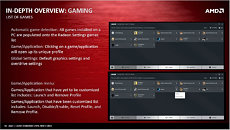
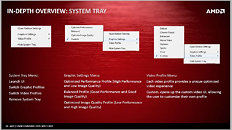
The "Video" tab lets you choose between eight presets specific to viewing situations and content. The "Display" tab gives you settings specific to your display (resolution, refresh rates, Virtual SuperResolution, scaling, etc. There's a tab specific to Eyefinity that shows up when there is more than one display. And finally, the "System" tab gives you information on your current hardware and software environment.
The most important settings from the Radeon Settings app are neatly integrated into the context menu of the tray icon.
AMD will release Radeon Software Crimson Edition later this month.
View at TechPowerUp Main Site
AMD's new nomenclature for its drivers involves firmly placing the Radeon brand name, replacing "Catalyst," followed by "software," indicating that these are not just drivers, but a suite of applications designed to give you control over your visual computing experience; with "Crimson Edition" being the major version for the year 2015-16, and 15.11 denoting November 2015, retaining the date-based version numbering scheme. These could come with extensions such as "WHQL" or "Beta." The first Crimson Edition drivers will be WHQL-signed.





At the center of Radeon Software Crimson Edition 15.11 is the doing away of Catalyst Control Center (CCC) and Raptr, and in their place, a slick new application built from the ground up, called Radeon Settings. This app no longer relies on .NET, unlike CCC. Its user interface is minimalist, and keeps up with the Windows 10 theme, but its variations could blend with OS X and Linux GUIs.





The application is designed for fast startup, and features a ribbon-tab UI design, with a top bar selecting main settings pages, and the bottom one with minor settings and social buttons. With Raptr gone, game-specific optical settings are care of the "Games" tab, in which you can make graphics and hardware overclocking settings specific to a game, besides global settings.



The "Video" tab lets you choose between eight presets specific to viewing situations and content. The "Display" tab gives you settings specific to your display (resolution, refresh rates, Virtual SuperResolution, scaling, etc. There's a tab specific to Eyefinity that shows up when there is more than one display. And finally, the "System" tab gives you information on your current hardware and software environment.
The most important settings from the Radeon Settings app are neatly integrated into the context menu of the tray icon.
AMD will release Radeon Software Crimson Edition later this month.
View at TechPowerUp Main Site




 But I do agree with you they are currently useless. I have SIX adaptors to choose from...Yeah helpful...
But I do agree with you they are currently useless. I have SIX adaptors to choose from...Yeah helpful...